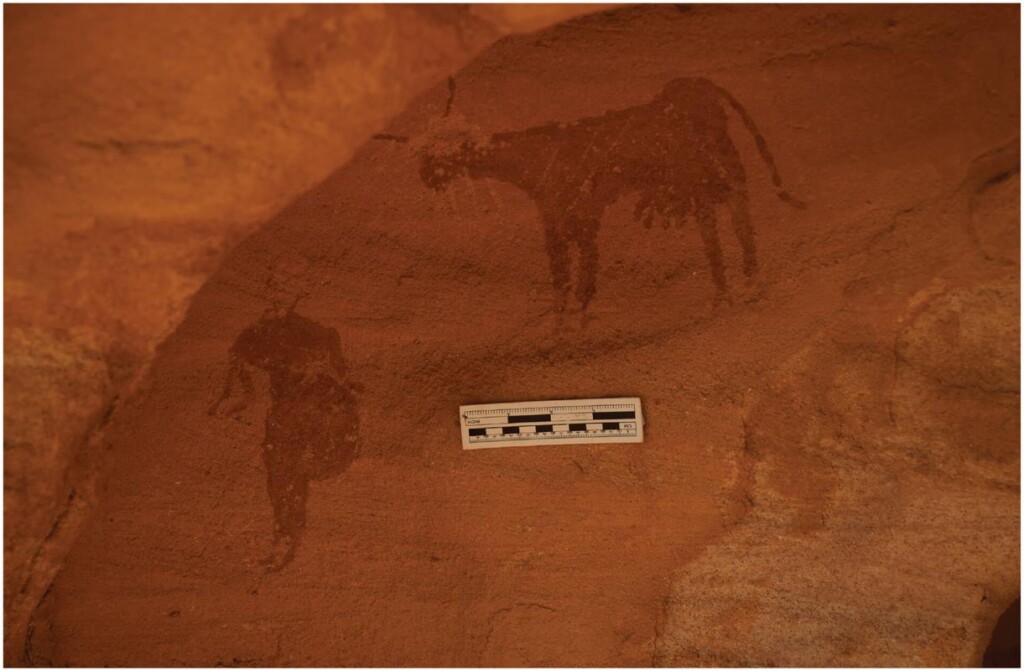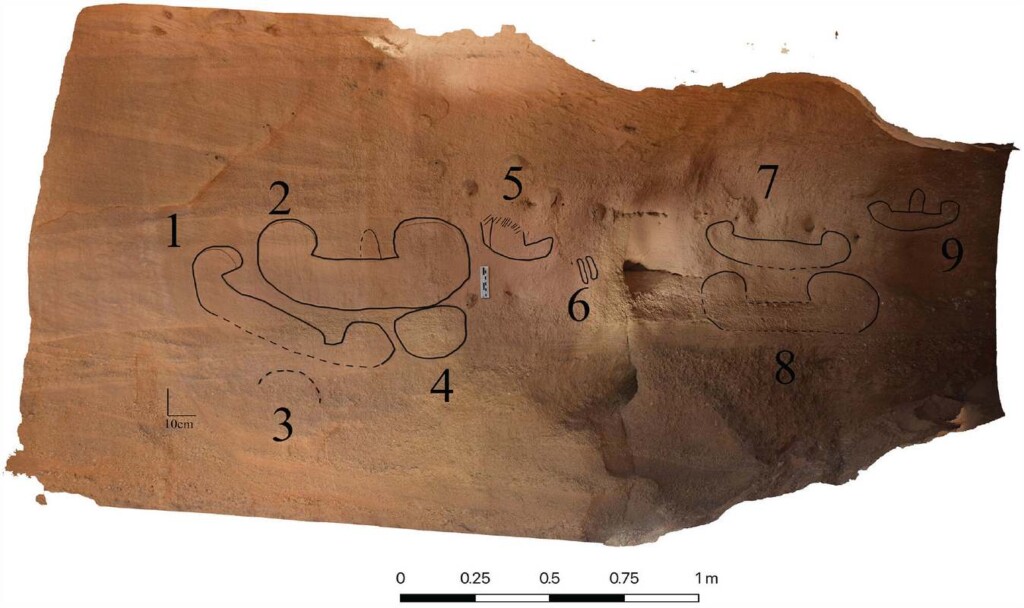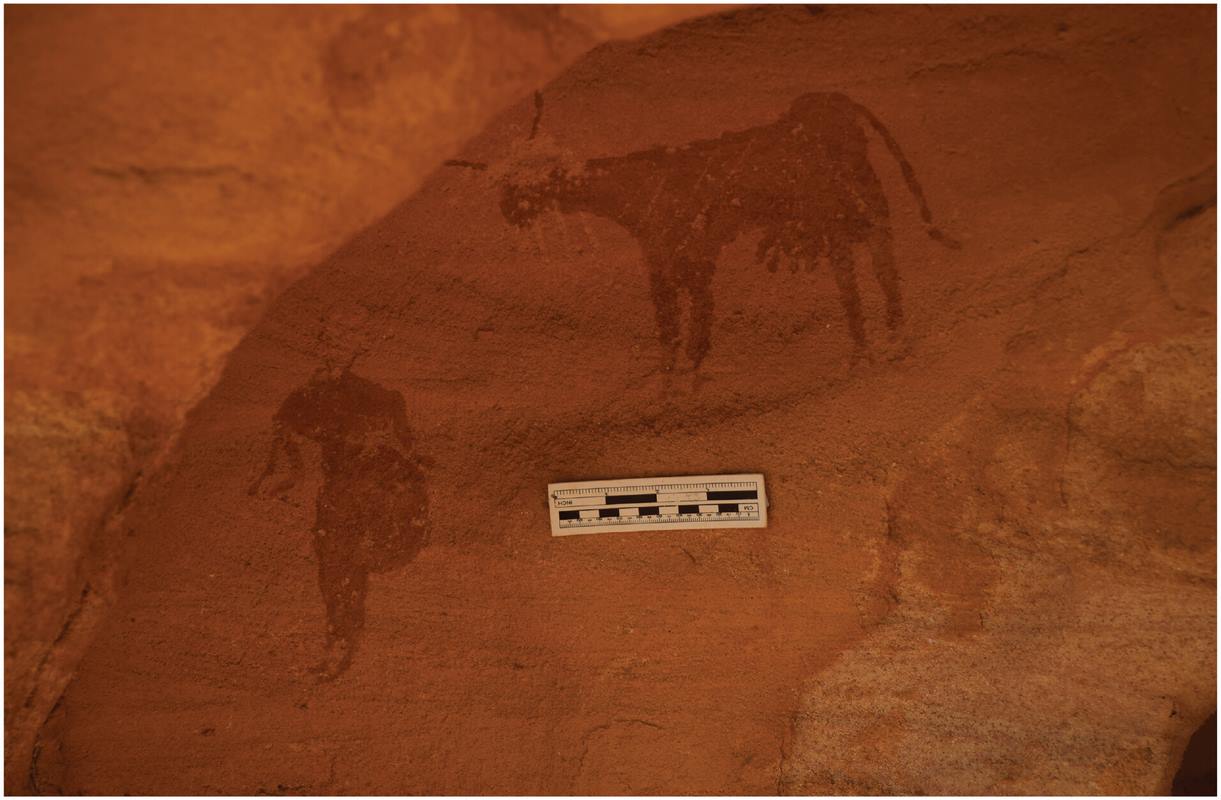
Geologists have known for years that from 5,000 years ago and beyond, much of what is today called the Sahara Desert was a lush grassland.
Some exceptional evidence of this recently surfaced in Sudan, where a paper published on a survey done in 2018 reveals the presence of rock art that depicts cattle herders and even boats.
Discovered in a region of the eastern Sahara called Atbai, there hasn’t been rain enough to support cattle here for at least 5,000 years.
Another exciting discovery was rock carvings depicting 6 boats on a cave wall found 90 miles from the nearest branch of the Nile. Near the entrance to a naturally-formed tunnel in a large rock outcrop in the desert, the boats “are arranged in the manner of a ‘fleet’ or ‘flotilla’, all seemingly emanating from the tunnel interior,” the authors write.
Several anomalies exist in the discovery, chief among them is the dissimilarity of the boats to other known carvings, particularly because of how simple and straightforward they appear.
“This provides a hint as to the identity of the rock art makers, who were probably not present in this remote section of the desert as government officials, but were arguably rather ‘common people’ conveying popular traditions through rock art,” they add.
The cattle drawings, found elsewhere, were similarly isolated from any water source.
“The cattle rock art is very significant, as cattle can no longer live in this hyper-arid desert,” lead author Julien Cooper, an archaeologist at Macquarie University in Sydney, told Live Science in an email. “It tells us that the people that made the art had a close connection to cattle.”
Pottery found in connection to the petroglyph sites suggests that the fourth millennium BCE was when their carvers lived in the area. At the end of this millennium, around 5,000 years ago, conditions in the Atbai were becoming very arid.

Because of this, and because of the obvious connection between the boat carvings and a waterway of some kind, the authors hypothesize that the carvers were Neolithic groups of Nubians who were early gold prospectors, as golden items have been found in burials dating back to the end of the fourth millennium BCE.
“[P]astoralists may still have found ephemeral grasslands and periodic surface water in this desert east of Lower Nubia,” the authors write. “Roughly similar latitudes in the Western Desert still received some of the northerly reaches of the African monsoons as documented by surveys…”
BEAUTIFUL ROCK ART: Newly Discovered Rock Art Panels Depict How Ancient Ancestors Envisioned Creation and Adapted to Change
In the cattle carving, the beast’s utter is clearly depicted, indicating that milking them was an integral part, as it still is today with pastoralists, of the man-animal relationship. However, to produce enough milk to feed the herders would require ample forage—another sign that whoever made these carvings had grown up in a tradition of pastoralism from wetter climes than Atbai, or at least wetter time periods.
YOU’LL ALSO LIKE: 4,000-Year-Old Pyramid Rises From the Soil of Kazakhstan–First of its Kind Ever Found on the Eurasian Steppes
The study authors conclude by describing the carvers as “the last embers of an ancient para-Nilotic nomadic pastoralism that existed before conditions ultimately dried to their present state.”
SHARE This With Your Friends Who Love Learning About Our Ancestors…




















